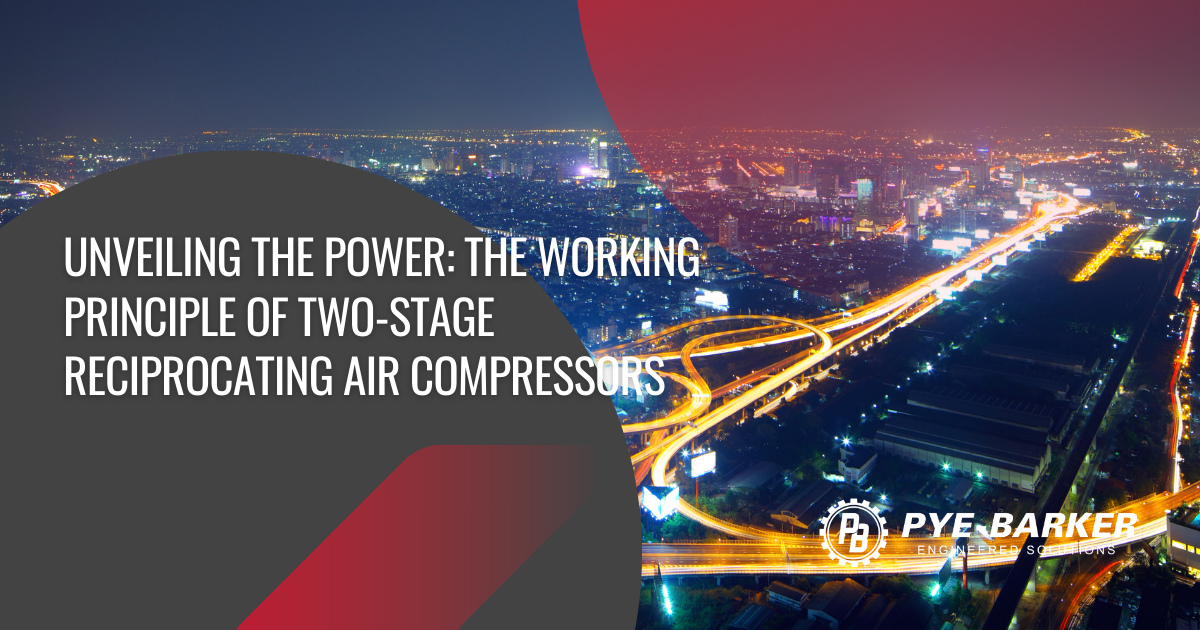
In the first stage, air undergoes compression to a medium level within the large cylinder/piston, generating a high volume of air at a relatively low pressure.
Cooler Efficiency. Post-stage 1, the compressed air is cooled back to a lower level, significantly enhancing the compressor's efficiency and reducing system stress.
Continuing the journey, the air is further compressed to reach the end pressure, this time within the small cylinder/piston, resulting in a surge to a higher pressure level despite decreased volume.
Note: Depending on the model, some compressors may visibly exhibit the two stages, while others seamlessly integrate the low and high-pressure cylinders into a single block, giving the appearance of a single-stage compressor.
Determining the required pressure is paramount. Two-stage reciprocating compressors in GA can achieve pressures up to 175 psi. Opting for a compressor with a lower maximum pressure but higher capacity is advisable if the application demands only 125 psi.
Capacity Planning. Understanding the required air amount is crucial. Two-stage reciprocating compressors typically offer capacities up to about 50 CFM. For higher requirements, exploring alternatives like rotary screw compressors may be beneficial.
Duty Cycle. An impressive feature of two-stage air compressors is their 100% duty cycle, indicating the ability to run continuously without cooling downtime. This attribute contributes to their reputation for power and durability.
Electrical Connection. Correct electrical connection is vital due to their larger size. Options include one- or three-phase motors and voltage choices such as 200 volts, 230 volts, or 460 volts. Professional installation by an electrician is recommended for optimal performance.
Curious about whether a reciprocating compressor in GA is the right fit for your application? Interested in learning more about single-stage vs. two-stage air compressors? Reach out to our expert team today for guidance or request a free quote!
For more information on the differences between a one stage vs two stage air compressor, read on.



Notifications